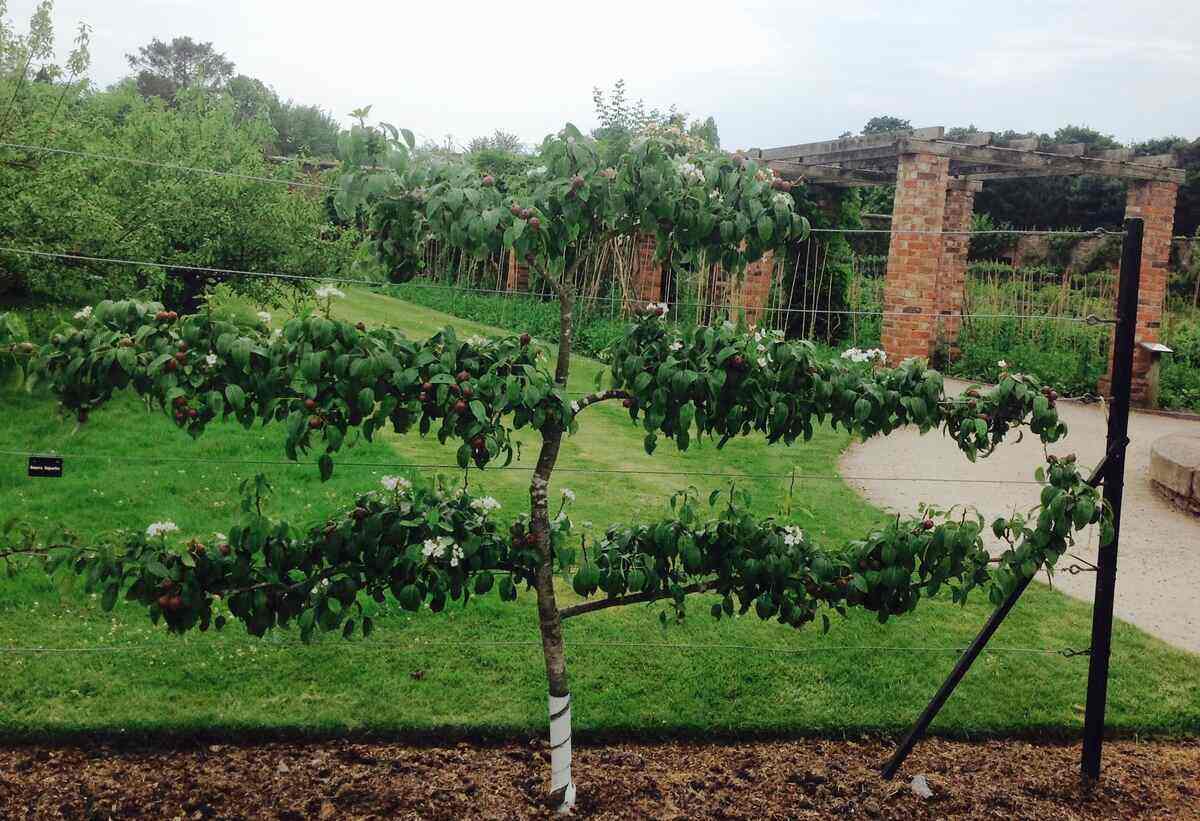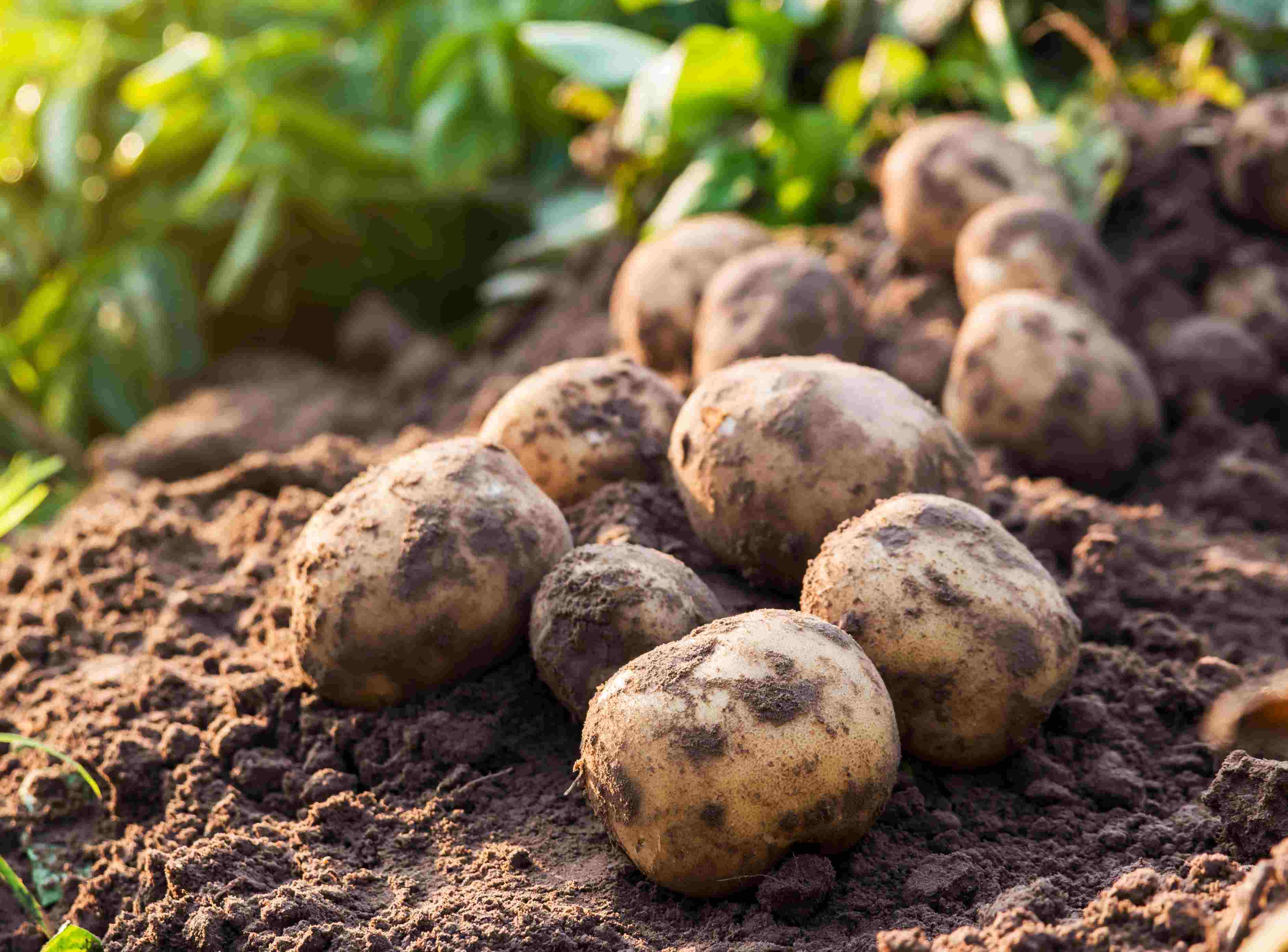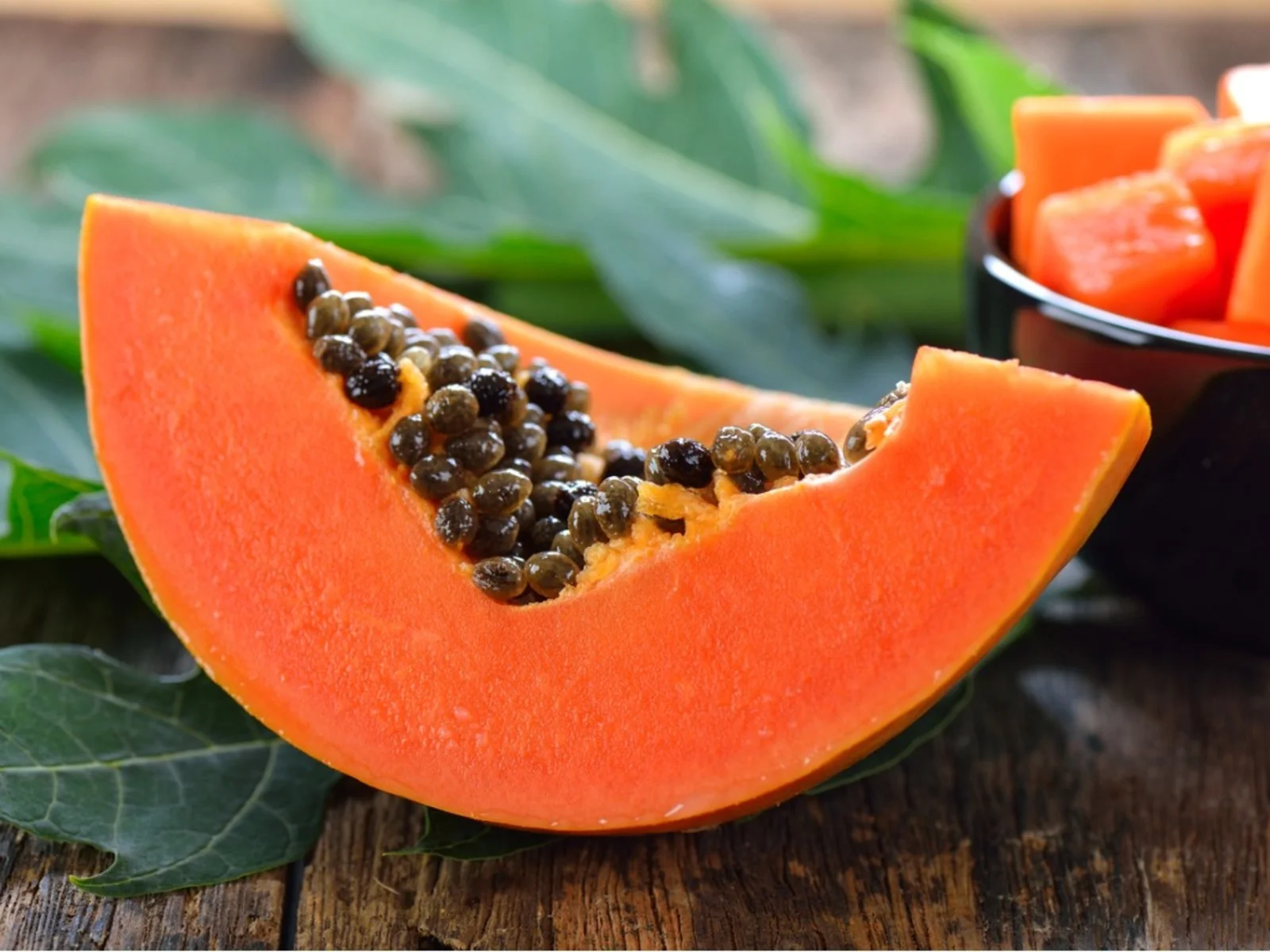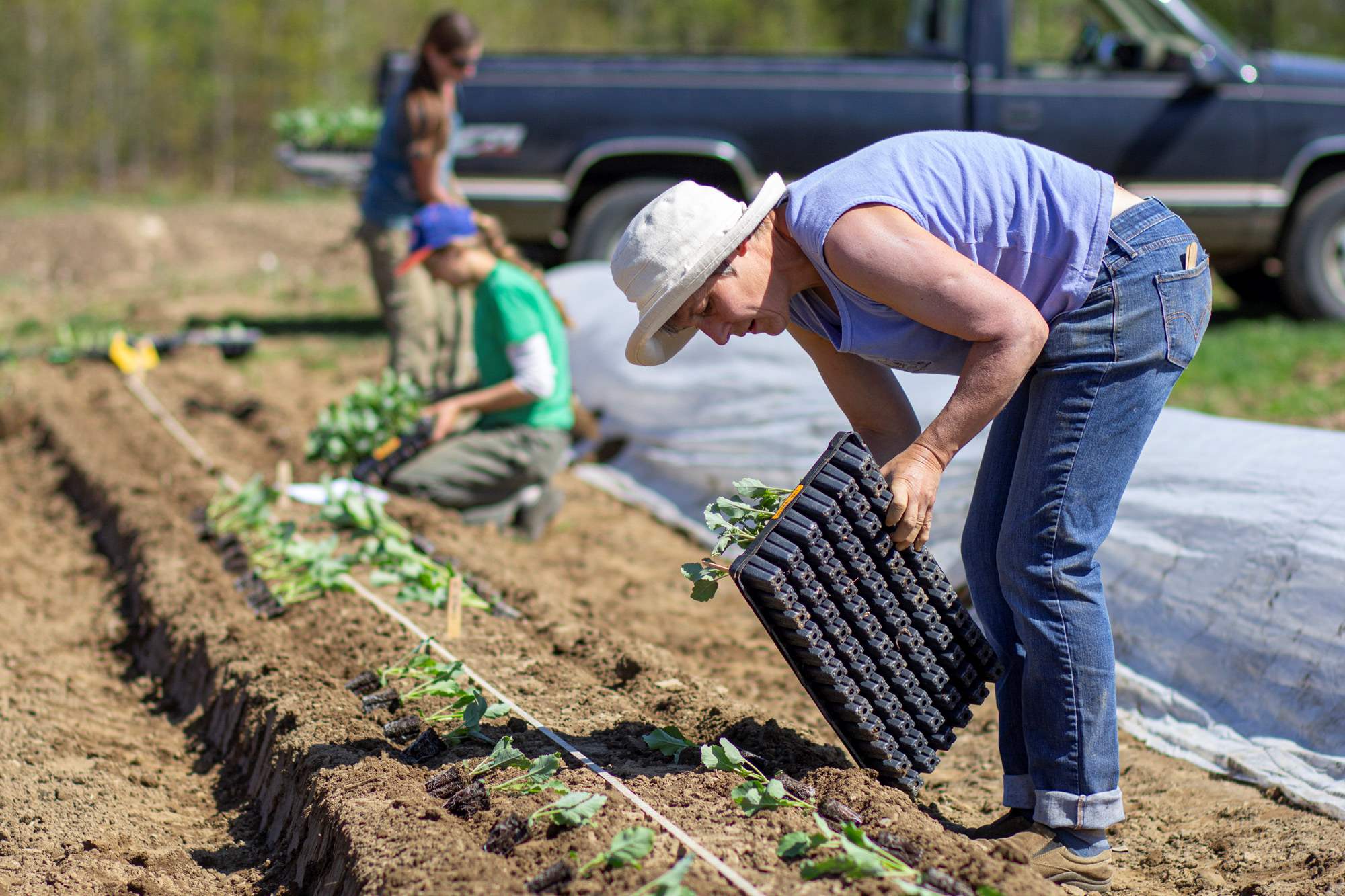Home>Garden Design>Planning Your Garden>How Long Before Avocado Trees Bear Fruit
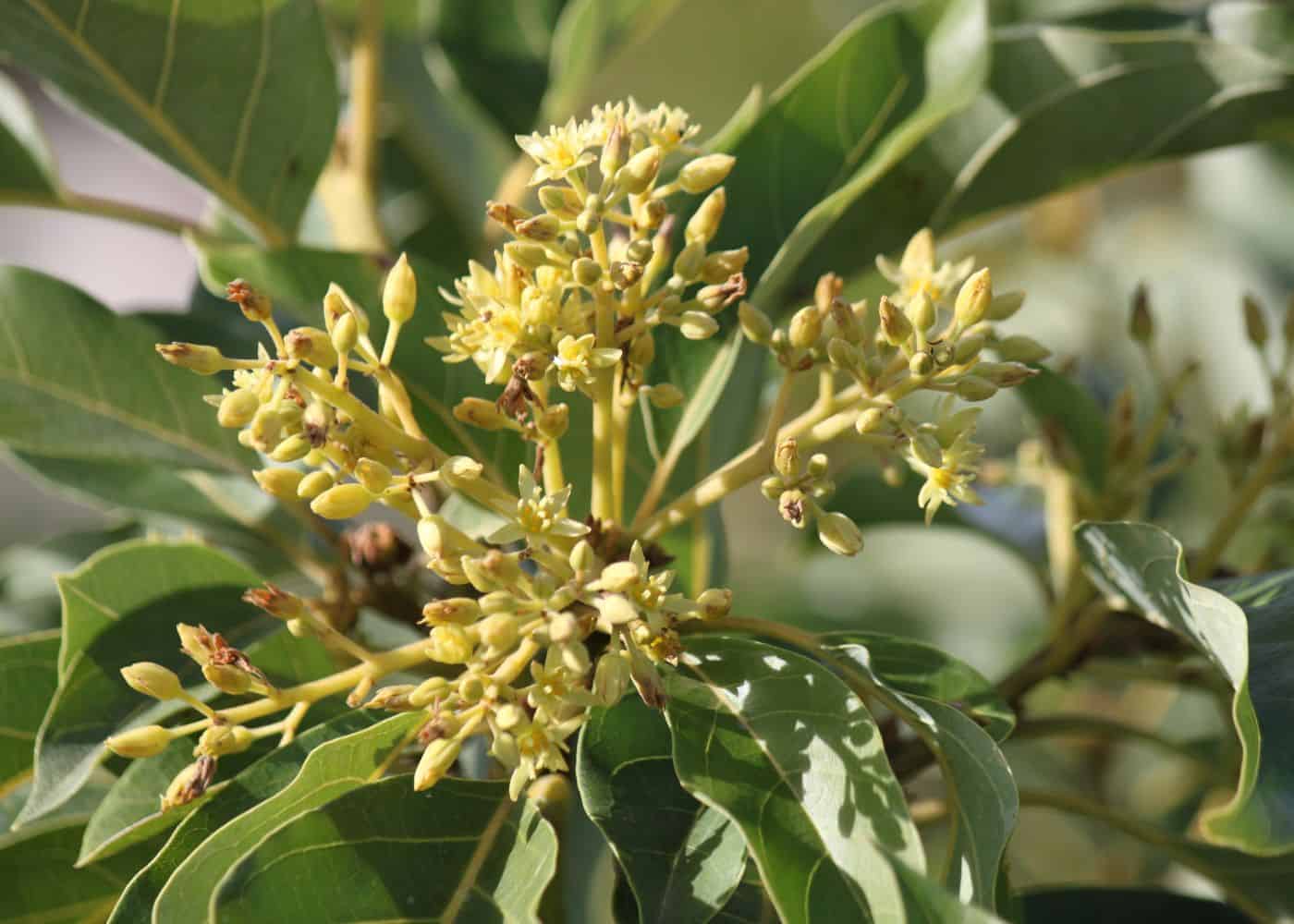

Planning Your Garden
How Long Before Avocado Trees Bear Fruit
Published: October 25, 2023
Learn how long it takes for avocado trees to bear fruit and plan your garden accordingly. Discover the timeline and factors influencing fruit production.
(Many of the links in this article redirect to a specific reviewed product. Your purchase of these products through affiliate links helps to generate commission for Chicagolandgardening.com, at no extra cost. Learn more)
Table of Contents
- Introduction
- Factors Affecting Avocado Tree Fruit Bearing
- Avocado Tree Varieties and Their Fruit Bearing Times
- Understanding the Maturity Cycle of Avocado Trees
- Environmental Factors Impacting Avocado Tree Fruit Bearing
- Disease and Pest Control for Avocado Trees
- Tips for Promoting Fruit Bearing in Avocado Trees
- Conclusion
Introduction
Gardening is a rewarding hobby that allows us to nurture and enjoy the beauty of nature right in our own backyard. And what better way to enhance your garden than by growing your own fruit trees? Avocado trees are a popular choice among garden enthusiasts, not only for their lush green foliage but also for their delicious and nutritious fruits. However, many gardeners are often curious about the time it takes for avocado trees to bear fruit.
Factors Affecting Avocado Tree Fruit Bearing
Several factors influence the fruit-bearing timeline of avocado trees. One such factor is the variety of the avocado tree itself. Different avocado tree varieties have varying growth rates and fruit-bearing times. The environmental conditions in which the tree is planted, including temperature, soil quality, and sunlight exposure, also play a significant role in determining when the tree will bear fruit. In addition to these factors, proper care and maintenance, including regular pruning and fertilization, can also affect the fruit-bearing potential of avocado trees.
Avocado Tree Varieties and Their Fruit Bearing Times
Avocado tree varieties are classified into two main groups: A and B types. The A type avocados, such as Hass and Fuerte, are considered self-fertile and are capable of setting fruit without cross-pollination. On the other hand, B type avocados, including Reed and Bacon, require cross-pollination with another avocado tree to bear fruit successfully.
The fruit-bearing time for avocado trees can vary depending on the variety and type. Generally, most avocado trees start producing fruit within 3 to 4 years of planting. However, certain varieties like Hass may take up to 5 to 7 years to bear fruit. It is important to note that while avocado trees may take some time to produce fruit, their long lifespan and high yield make them a valuable addition to any garden.
Understanding the Maturity Cycle of Avocado Trees
Avocado trees go through different stages of growth before they can bear fruit. The first stage is the juvenile stage, which lasts for the first 2 to 3 years after planting. During this period, the tree focuses on establishing a strong root system and developing its foliage, rather than producing fruit.
Once the juvenile stage is complete, the avocado tree enters the pre-fruiting stage. This stage typically occurs around 4 to 5 years after planting. During this stage, the tree starts to produce blossom clusters, which eventually develop into avocados. However, it is essential to note that not all blossom clusters will turn into fruits. Young avocado trees often shed a significant number of blossoms during the early years of fruit production.
Finally, the avocado tree reaches the mature fruit-bearing stage. This stage begins around 5 to 7 years after planting and is characterized by consistent fruit production. Mature avocado trees can bear a significant number of fruits each year, providing an abundant harvest for gardeners to enjoy.
Continued maintenance and care, such as regular pruning and fertilization, along with optimal environmental conditions, are crucial for maximizing fruit production and ensuring the health and longevity of avocado trees.
Factors Affecting Avocado Tree Fruit Bearing
There are several key factors that can influence the fruit-bearing time of avocado trees. Understanding these factors will help you successfully cultivate and nurture your avocado trees to ensure a bountiful harvest.
Variety of Avocado Tree: The variety of avocado tree you choose to plant plays a significant role in determining when it will bear fruit. Different avocado varieties have varying growth rates and fruit-bearing times. Some varieties, like Hass and Fuerte, are known to bear fruit earlier, typically within 3 to 4 years of planting. Others, such as Reed and Bacon, may take slightly longer to bear fruit.
Environmental Conditions: The environmental conditions in which an avocado tree is planted can greatly impact its fruit-bearing potential. Avocado trees thrive in warm, subtropical or tropical climates. They require a frost-free environment with temperatures ranging between 60 to 85 degrees Fahrenheit. Adequate sunlight exposure is also crucial for avocado tree development. A minimum of six hours of direct sunlight per day is recommended.
Soil Quality: Avocado trees prefer well-draining soil with a slightly acidic pH level between 6 and 6.5. Soil that retains too much water can lead to root rot and other diseases, adversely affecting the tree’s ability to bear fruit. The soil should also be rich in organic matter and nutrients to support healthy growth and fruit production. Regular soil testing and amendments can help ensure optimal soil conditions for your avocado trees.
Watering and Irrigation: Proper watering and irrigation practices are vital for avocado tree fruit bearing. Avocado trees require deep, infrequent watering to promote deep root growth. It is important to provide consistent moisture during the tree’s growth and fruiting stages. However, overwatering can lead to root rot, while underwatering can cause stress and lead to poor fruit development. Adjust your watering schedule based on the season, weather conditions, and specific needs of your avocado trees.
Pruning and Fertilization: Regular pruning and fertilization are essential for maintaining the health and productivity of avocado trees. Pruning helps shape the tree, promotes airflow, and encourages sunlight penetration, which aids in fruit production. Fertilizers rich in nitrogen, phosphorus, and potassium should be applied at the appropriate times to provide the necessary nutrients for healthy growth and fruit development. Follow recommended guidelines for pruning and fertilizing your avocado trees to optimize fruit-bearing capabilities.
Cross-Pollination: While some avocado tree varieties are self-fertile, meaning they can bear fruit without cross-pollination, others require cross-pollination with another avocado tree for successful fruiting. If you have a self-sterile variety, it is important to plant a compatible pollination partner nearby to ensure optimal fruit production. Be sure to choose varieties that bloom at the same time and are compatible for cross-pollination.
By understanding and managing these factors, you can create an optimal growing environment for your avocado trees, increasing the likelihood of abundant fruit production. Remember to monitor the health of your trees, address any pest or disease issues promptly, and provide consistent care and maintenance throughout the year to maximize fruit-bearing potential.
Avocado Tree Varieties and Their Fruit Bearing Times
Avocado trees come in various varieties, each with its own characteristics, including fruit size, taste, and fruit-bearing time. Understanding the different avocado tree varieties can help you choose the right one for your garden and manage your expectations regarding fruit production.
A Type Avocado Trees: A type avocado trees, such as Hass, Fuerte, and Gwen, are considered self-fertile. This means they do not require cross-pollination with another avocado tree to bear fruit. These varieties are known for their excellent flavor and are particularly popular among gardeners and consumers.
The fruit-bearing time for A type avocados varies depending on factors like environmental conditions and proper care. In general, A type avocado trees can start producing fruit within 3 to 4 years of planting. However, some varieties, like Hass, may take slightly longer, typically around 5 to 7 years, to bear fruit. It is important to note that patience is key when growing A type avocado trees, as they have a longer maturity cycle.
B Type Avocado Trees: B type avocado trees, including Reed, Bacon, and Zutano, require cross-pollination with another compatible avocado tree to produce fruit. These varieties have separate male and female flowers, and the pollen from one tree needs to be transferred to the flowers of another tree for successful fruit development.
When planting B type avocado trees, it is crucial to choose a compatible pollination partner that blooms at the same time. Proper cross-pollination will ensure desirable fruit production. B type avocado trees generally start bearing fruit within 3 to 4 years of planting, similar to their A type counterparts.
Keep in mind that the fruit-bearing time can slightly vary depending on factors such as environmental conditions, care, and maintenance. It is recommended to select a combination of A and B type avocado trees to maximize fruit production and ensure successful pollination.
Aside from A and B type avocado trees, there are also specialty varieties available on the market. These unique cultivars offer distinct flavors, textures, and appearances. While they may have different fruit-bearing times compared to traditional A and B type avocados, they are an exciting addition to any garden.
When planning your avocado orchard or deciding which varieties to grow in your garden, consider the climate, soil conditions, and available space. Additionally, take into account the desired fruit-bearing time and the pollination requirements of the chosen varieties. Having a mix of avocado tree varieties can ensure a continuous supply of delicious and healthy fruits throughout the growing season.
Cultivating avocado trees requires patience, as they may take several years to bear fruit. However, with proper care, maintenance, and the right varieties, your avocado trees will reward you with a bountiful harvest of creamy, nutrient-rich avocados that you can enjoy for years to come.
Understanding the Maturity Cycle of Avocado Trees
Avocado trees, like many fruit trees, go through various stages of growth before they are capable of bearing fruit. Understanding the maturity cycle of avocado trees can help gardeners anticipate and manage the different growth phases, leading to successful fruit production.
Juvenile Stage: The first stage in the maturity cycle of avocado trees is the juvenile stage. This stage occurs during the first 2 to 3 years after planting, during which the tree focuses on establishing a strong root system and developing its foliage. During this period, limited to no fruit production is expected as the tree directs its energy towards growth and establishing a healthy foundation.
Pre-Fruiting Stage: The pre-fruiting stage typically begins around 4 to 5 years after planting. At this stage, the avocado tree starts producing blossom clusters, which will eventually develop into avocados. While the tree is capable of setting fruit during this stage, it is important to note that not all blossom clusters will turn into fruits. Young avocado trees often shed a significant percentage of blossoms as they focus on building their strength and ensuring optimal fruit development in the future.
Mature Fruit-Bearing Stage: The avocado tree enters the mature fruit-bearing stage around 5 to 7 years after planting, although this timeline can vary depending on factors such as variety and environmental conditions. During this stage, the tree reaches its full maturity, and consistent fruit production can be expected. Mature avocado trees bear a significant number of fruits each year, providing a bountiful harvest for gardeners to enjoy.
It is essential to recognize that the maturity cycle can vary among avocado tree varieties. Some varieties may reach maturity and start fruiting earlier, while others may take longer. Additionally, environmental conditions and proper care and maintenance play a crucial role in the overall growth and fruit-bearing potential of avocado trees.
To ensure optimal fruit production and a healthy avocado tree, proper care should be given during each stage of the maturity cycle. Regular pruning helps shape the tree, promotes airflow, and encourages sunlight penetration, all of which are important for fruit development. Fertilizing the tree with the appropriate nutrients at the right times provides essential nourishment for growth and fruit production.
Consistent irrigation is also vital throughout the maturity cycle. Avocado trees require deep, infrequent watering to promote deep root growth. Adequate water supply during the fruiting stage ensures proper fruit development and prevents stress-related issues that can affect yield and quality.
Lastly, monitoring the health of the tree and promptly addressing any pest or disease issues is crucial for a successful maturity cycle. Regular inspection of leaves, branches, and fruits can help detect any potential problems early on, allowing for timely intervention and treatment.
By understanding and managing the maturity cycle of avocado trees, gardeners can maximize fruit production and ensure long-term health and productivity. Proper care and attention at each stage of the cycle will lead to a thriving avocado tree that provides a plentiful harvest of delicious, creamy avocados.
Environmental Factors Impacting Avocado Tree Fruit Bearing
Avocado trees are native to warm, subtropical or tropical climates, and their fruit-bearing potential can be greatly influenced by the environmental conditions in which they are planted. Understanding and optimizing these environmental factors is essential for ensuring successful fruit production in avocado trees.
Temperature: Avocado trees thrive in temperatures between 60 to 85 degrees Fahrenheit (15 to 29 degrees Celsius). Temperatures outside this range can negatively impact fruit set and development. Frost can be especially damaging to avocado trees, causing leaf and branch dieback or even the death of the entire tree. If you live in a region that experiences cold winters, consider planting your avocado tree in a sheltered area or using protective measures like frost blankets to safeguard it from extreme temperatures.
Sunlight: Avocado trees require ample sunlight for optimal growth and fruit production. They need a minimum of six hours of direct sunlight per day. Insufficient sunlight can result in poor fruit development and decreased yield. Before planting your avocado tree, assess the available sunlight in your garden or orchard. Choose a location that provides the necessary sunlight exposure to ensure the health and productivity of your tree.
Soil Quality: The quality of the soil in which your avocado tree is planted is a critical environmental factor. Avocado trees prefer well-draining soil with a slightly acidic pH level between 6 and 6.5. Soil that retains too much water can lead to root rot, while overly sandy or rocky soil may not provide adequate nutrients and moisture for optimal growth. Conduct a soil test to determine its composition and nutrient levels. Amend the soil with organic matter, such as compost or well-rotted manure, to improve its structure and fertility.
Watering: Proper watering practices are crucial for avocado tree fruit bearing. Avocado trees prefer deep, infrequent watering that allows the root system to penetrate deeper into the soil. Frequent shallow watering can lead to shallow root development and make the tree more susceptible to stress. Provide sufficient water during the growing season, especially during dry spells or periods of high temperatures. However, avoid overwatering, as excessive moisture can lead to root rot and other diseases.
Wind: Avocado trees can be sensitive to strong winds, which can cause physical damage to the tree, disrupt pollination, and lead to fruit drop. Planting avocado trees in a location that offers some protection from strong winds, such as near a fence or building, can help mitigate these risks.
Pollination: Cross-pollination is a crucial factor for certain avocado tree varieties to bear fruit. It requires the presence of compatible pollen sources nearby. Be sure to select compatible varieties that bloom at the same time and provide the necessary conditions for successful pollination. If your avocado tree requires cross-pollination, planting another compatible variety within close proximity will ensure optimal fruit set.
Pest and Disease Control: Environmental factors can also influence pest and disease prevalence, which can impact fruit bearing in avocado trees. Proper pest management practices, such as regular monitoring, prevention, and early intervention, are essential for maintaining tree health. Maintain a clean growing area, remove diseased leaves or fruits promptly, and use appropriate organic or chemical treatments when necessary.
By understanding and addressing these environmental factors, you can create an optimal growing environment for your avocado trees. Providing the right conditions, such as appropriate temperature, sunlight, soil quality, and water, will ensure healthy growth and maximize fruit production. Additionally, proper pest and disease control measures will promote tree vigor and prevent setbacks in fruit-bearing potential. Taking care of the environmental needs of avocado trees will reward you with a lush, fruitful tree that provides an abundant harvest of delicious avocados.
Disease and Pest Control for Avocado Trees
While avocado trees are generally hardy and resilient, they are still susceptible to certain diseases and pests that can impact their health and fruit production. Proper disease and pest control measures are crucial in maintaining the vigor and productivity of avocado trees. By being proactive and implementing preventive strategies, you can prevent and minimize the damage caused by these threats.
Common Diseases: Avocado trees can fall victim to various diseases, including:
- Phytophthora root rot: This is one of the most significant diseases affecting avocado trees. It is caused by a soil-borne pathogen. Symptoms include yellowing leaves, dieback, and root rot. Proper drainage, avoiding overwatering, and using disease-resistant rootstocks can help prevent this disease.
- Anthracnose: Anthracnose is a fungal disease that affects the fruit, leaves, and twigs of avocado trees. Infected fruits develop dark, sunken lesions. Pruning to improve airflow, practicing good sanitation, and applying appropriate fungicides can help manage anthracnose.
- Leaf spot: Leaf spot is caused by fungal pathogens and results in dark, circular spots on the leaves. It can be controlled by maintaining proper spacing between trees, watering early in the day to allow foliage to dry, and using fungicides when necessary.
Common Pests: Avocado trees can also attract pests that can damage both the foliage and fruit. Some common pests include:
- Avocado lace bug: These small insects suck sap from the leaves, causing yellowing and browning. Regular monitoring and the use of appropriate insecticides can help control lace bugs.
- Avocado thrips: These tiny, slender insects cause damage to the leaves and fruit. Monitor for thrips and use integrated pest management techniques, including using beneficial insects, to control their population.
- Scale insects: Scale insects appear as small, waxy bumps on the stems and leaves. They can cause leaf yellowing and sooty mold growth. Prune and dispose of heavily infested branches and use horticultural oils or insecticides to manage scales.
Preventive Measures: Implementing preventive measures is key to disease and pest control in avocado trees. Here are some strategies you can follow:
- Maintain tree health: Healthy trees are more resistant to diseases and pests. Provide proper nutrition, water, and sunlight to promote tree vigor.
- Pruning and sanitation: Regular pruning helps improve airflow and prevents the buildup of infected plant material. Proper sanitation practices, such as removing fallen leaves and fruit, can help reduce disease and pest pressure.
- Monitor and identify: Regularly inspect your avocado trees for any signs of disease or pest infestation. Early detection allows for timely intervention and effective management.
- Integrated pest management (IPM): Incorporate IPM practices that focus on using a combination of biological, cultural, and chemical control methods. This approach aims to minimize the use of chemicals while effectively managing pests and diseases.
- Follow label instructions: If the use of chemical control methods becomes necessary, always read and follow the instructions on the label of the pesticide. Use approved products and apply them at the appropriate time and rate.
By implementing these disease and pest control measures, you can protect your avocado trees from potential threats and ensure fruitful harvests of healthy, delicious avocados. Regular monitoring, proactive management, and adherence to proper cultural practices will contribute to the overall success and longevity of your avocado trees.
Tips for Promoting Fruit Bearing in Avocado Trees
Growing avocado trees can be a rewarding endeavor, but it requires proper care and maintenance to promote healthy fruit production. By following these tips, you can enhance the fruit-bearing potential of your avocado trees and enjoy a bountiful harvest.
Choose the Right Variety: Select avocado tree varieties that are well-suited to your climate and growing conditions. Consider factors such as cold tolerance, disease resistance, and fruit quality. Choosing appropriate varieties will increase the likelihood of successful fruit production.
Plant in the Right Location: Ensure that your avocado trees are planted in a location that receives ample sunlight and has well-draining soil. Avocado trees require a minimum of six hours of direct sunlight daily to thrive. They also prefer soil with a pH between 6 and 6.5, which is slightly acidic. Avoid areas prone to frost or excessive wind, as these can adversely affect fruit production.
Proper Irrigation: Avocado trees require regular, deep watering to develop a strong root system and promote fruit production. Water the trees deeply, allowing the soil to dry slightly between watering sessions. Adequate moisture is especially crucial during hot and dry periods. However, avoid overwatering, as excessive moisture can lead to root rot and other fungal diseases.
Fertilize Regularly: Avocado trees benefit from regular fertilization to maintain healthy growth and fruit production. Use a balanced fertilizer specially formulated for fruit trees and follow the instructions provided. Apply fertilizer at least twice a year—preferably in early spring and late summer—to provide the necessary nutrients for optimal fruit development.
Pruning and Training: Prune your avocado trees to maintain a desired shape, promote airflow, and control the size. Prune out any dead, damaged, or diseased branches. Additionally, thin out crowded branches to allow sunlight to penetrate all parts of the tree. Proper pruning and training contribute to healthy growth and can stimulate fruit production.
Provide Wind Protection: Wind can damage avocado trees, causing physical harm to branches and disrupting pollination. Plant windbreaks or use protective barriers, such as shade cloth or fences, to shield your avocado trees from strong winds. This will help prevent potential damage and increase the chances of successful fruit production.
Pollination: For varieties that require cross-pollination, ensure that you have compatible avocado trees nearby. Planting different avocado tree varieties that bloom at the same time will ensure adequate fertilization and fruit set. Proper pollination is essential for fruit development and maximizing yield.
Monitor for Pests and Diseases: Regularly inspect your avocado trees for signs of pests or diseases. Monitor leaves, branches, and fruit for any abnormalities or infestations. Early detection allows for prompt intervention and helps prevent the spread of pests or diseases. Implement a pest management program and utilize organic or chemical treatments when necessary.
Protect from Cold Weather: If you live in an area with occasional frost, protect your avocado trees from cold temperatures. Cover the trees with blankets or burlap during frosty nights or use frost-protection sprays. Providing insulation during cold spells will prevent damage to young buds and promote consistent fruit production.
By following these tips, you can create a conducive environment for your avocado trees to thrive and increase the likelihood of a successful fruit-bearing season. Remember to provide proper care, monitor for potential issues, and adjust your practices as needed to optimize the health and productivity of your avocado trees.
Conclusion
Growing your own avocado trees and enjoying the fruits of your labor can be a truly rewarding experience. While avocado trees may take some time to bear fruit, the process is well worth the wait. By understanding the factors that impact fruit bearing, such as variety selection, environmental conditions, and proper care, you can set yourself up for success in cultivating thriving avocado trees.
Choosing the right avocado tree varieties, considering their fruit-bearing times, and ensuring cross-pollination if necessary are important factors in determining when you can expect to see your first harvest. Environmental factors like temperature, sunlight, soil quality, and proper watering also play important roles in the fruit-bearing potential of avocado trees.
Proper care and maintenance, such as regular pruning, fertilizing, and monitoring for pests and diseases, are essential for promoting healthy growth and maximizing fruit production. By implementing preventive measures and promptly addressing any issues that arise, you can protect your trees from diseases and pests that may hinder their fruit-bearing ability.
During the maturity cycle of avocado trees, from the juvenile stage to the mature fruit-bearing stage, it is essential to provide adequate support and maintenance. Pruning to enhance airflow, monitoring irrigation, and practicing proper pollination techniques all contribute to the health and productivity of your avocado trees.
By following the tips provided in this article, you can optimize your avocado tree’s fruit-bearing potential. With patience, care, and a suitable growing environment, you will soon be rewarded with a plentiful harvest of delicious and nutritious avocados.
Remember to enjoy the journey as you nurture your avocado trees. Gardening is a continuous learning process, and each season brings new experiences and opportunities for growth. With dedication and passion, you can create a thriving avocado orchard or garden that provides years of joy and abundance.
